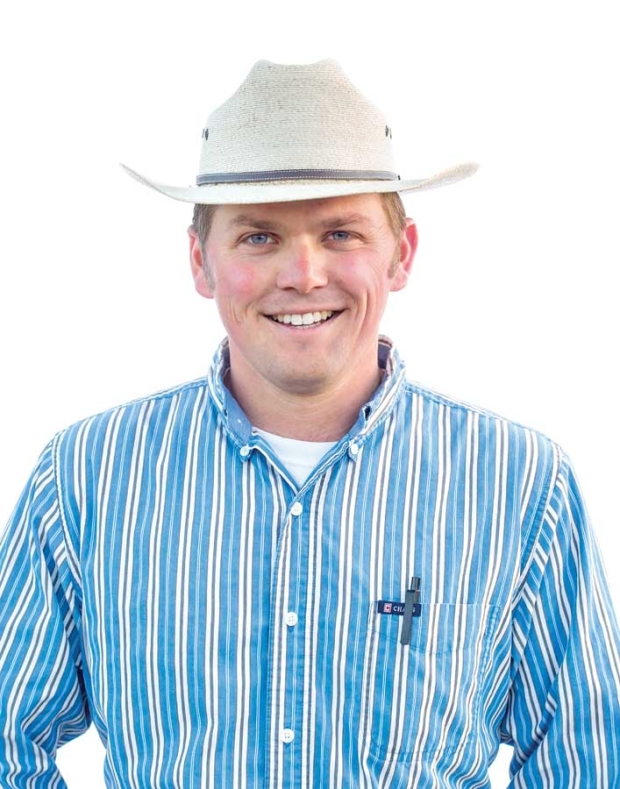age / 28
 crops / Apricots, walnuts, almonds and other diversified row crops.
crops / Apricots, walnuts, almonds and other diversified row crops.
business / Bays Ranch, Inc.
family background / Fifth generation farmer, part owner with his father Ken Bays, grandfather Gene Bays.
How did you become a farmer?
I grew up in the family farm. I just enjoyed being outdoors. I liked the variety, challenges and projects that came along with it. I learned how to be an electrician, how to work in the shop, how to do books in the office, how to be an agronomist, how to check the fields and learn what to do. I enjoy that I’m not doing the same thing day-in, day-out.
What is your apricot season like?
With our farm, we grow about 700 acres of apricots of the Patterson variety. The majority of them go toward processing, frozen, canned, dried and juiced. Our harvest period goes from mid-June through early July, and it’s all hand picked. To do that we have from about 100 to 500 people here on any given day picking fruit to get it off to the processors.
What challenges does your farm face?
In California we’re faced with all sorts of regulations and pests, especially the last few years with the warmer than normal winters. Another challenge that’s come along with this year’s drought is not just the quantity of the water, but the quality. Using well water and the lower quality water coming out of the rivers, we’ve had to be more proactive with our soil amendments and fertilizers to try keeping the trees as healthy as possible. We don’t want to reach toxic levels with our micronutrients because of what’s naturally occurring in our groundwater.
How does your farm deal with water shortages?
These older wells stay pretty consistent and we get good water flow. The places where there’s not much water coming out—we’ve found in those wells the quality is poor. So we depended on those wells purely as an emergency insurance policy. Even as we’ve farmed those pieces of ground, we’ve been a little more conservative about the percentage of land we’ll plant with a permanent crop. Basically we cannot be too dependent because it’s not a reliable source of water.
In some of our fields our water has been zero, and we don’t have the water there for it. Thankfully our irrigation districts have been pretty good, and even our neighbors, about getting creative dealing with the water issues, from sharing pipelines, being able to pump from one canal and put it in another. That’s helped us squeak by in a lot of places. Some orchards where they’re getting up in years—we’re planning to take them out in two or three years.
Last year we took out 45 acres after harvest to stretch that water supply for the rest of the orchard. It was an older orchard with some disease problems and we figured it would be good opportunity to also give that ground a rest for a year or two.
There’s other pieces where water is tight and the trees are in better shape where we’ve taken a deficit irrigation strategy. Where normally we might be putting an inch on every week or every couple days—then we cut it down to three quarters of an inch. It stresses the trees a little bit more and you don’t have the crop load or the bud set for next year. But at least we’re keeping that orchard alive. When we do that, everything takes a little hit, instead of one particular field really taking it hard.
What’s the one thing you most enjoy?
What I’ve enjoyed has changed over time. When I was in high school I liked being in the shop tinkering on engines, welding equipment to improve things or fix things. After I returned from college, some of the water and nutrient management—the agronomy aspect—was interesting to me. As time went on, I saw with my father and grandfather that being involved in some of the politics was important.
In the future, I’m sure that several of the water boards and advisory committees, even the accounting and banking and business side will be more appealing to me.






Leave A Comment